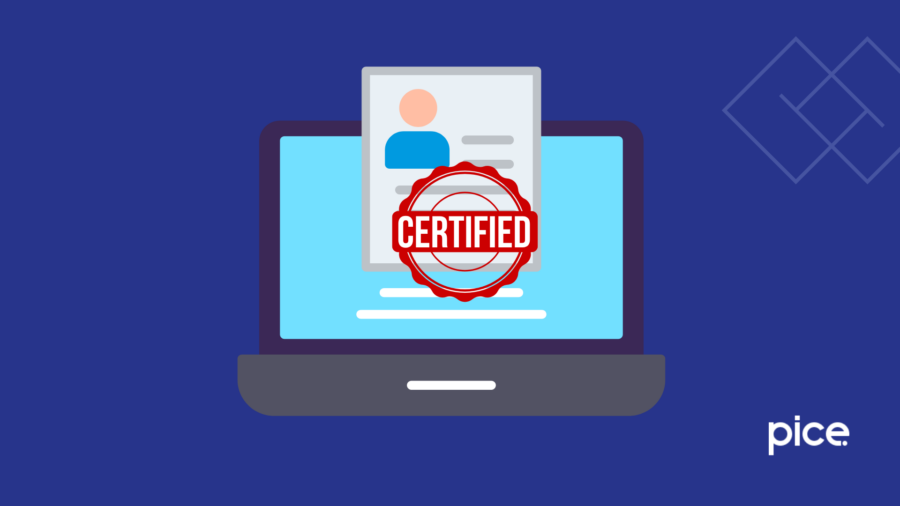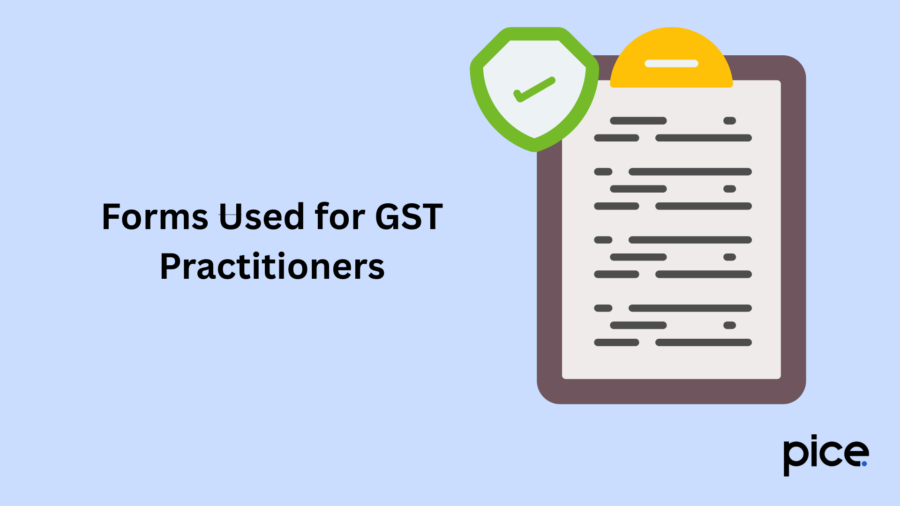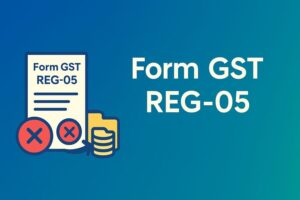How to Become a Certified GST Practitioner?
- 26 May 25
- 11 mins

How to Become a Certified GST Practitioner?
Key Takeaways
- A GST Practitioner (GSTP) is an authorized professional who assists taxpayers with GST compliance and representation.
- To become a GSTP, one must register on the GST portal using Form PCT-01 and obtain the certificate Form PCT-02.
- After registration, candidates must pass the GSTP examination conducted by NACIN within 2 years to become certified.
- The GSTP exam is a computer-based MCQ test requiring at least 50% to pass, with no limit on the number of attempts in the 2-year window.
- A GST Practitioner’s license is valid for life unless cancelled and allows them to operate nationwide once enrolled.
Becoming a certified GST Practitioner (GSTP) in India enables professionals to help businesses with GST-related activities such as filing returns and giving tax advice. To become a GSTP, you must fulfil certain conditions, register on the GST portal and pass the GSTP exam by NACIN.
The process requires filling out Form GST PCT-1, verifying the applicant by tax authorities, and approval of the certificate (GST PCT-05). A GSTP is valuable to businesses to help with the ease of GST compliance.
Continue reading this blog to learn how to become a certified GST practitioner, the practices you should follow to become one, the steps to follow for appearing in the exam and more.
Who Is a GST Practitioner?

A Goods and Services Practitioner is an individual who is approved under Section 48 to perform as such a practitioner, as mentioned under Section 2(55) of the CGST Act, 2017.
In other words, a certified GST practitioner is thereby an individual whom both the Central and State Governments have approved to perform the following functions on behalf of the taxable person:
- File application for amendment or cancellation of registration
- Apply for issuance of a fresh registration
- Presenting details of inward and outward supplies
- Present quarterly, monthly, annual or final GST returns that include GSTR-3B, GSTR-9 and GSTR-1
- Make payments for credit into the electronic cash ledger. For example, interest, penalty, payments for tax, fees and any other amount
- Appear as an authorized representative before any other officer of department, appellate authority or appellate tribunal
- File claim for refund
Under Rule 84, persons fail to meet the desired eligibility criteria to attend before any authority in the position of a certified GST tax practitioner in connection with any proceedings under the Act on behalf of any registered or unregistered individual who is enrolled under Rule 83. Enrolling as a single registration is however sufficient to become a certified GST practitioner on a global basis.
Steps on How to Become a Certified GST Practitioner
It is possible to conduct registration as a GST practitioner only through the PCT-1 Application, after which you can receive the Form GST PCT-2 certificate. Here are the simple steps to follow for becoming a certified GST practitioner:
1. Register on the GST Portal as a GST Practitioner and Obtain Enrollment Certificate (Form PCT-01 and Form PCT-02)
For registration on the GST portal as a GST practitioner, the simple steps to follow are:
1. Visit the GST common portal and go to the 'New Registration' option.
2. Fill out the application form and from the drop-down list, choose that you are a 'GST Practitioner'. Enter your name, state, district, PAN number, email and contact number.
3. Make sure to validate the basic details using the OTP received on your registered contact number and email ID.
4. Once validated, the GSTN will generate a 15-digit Temporary Reference Number (TRN).
5. Go to Services>Registration>New Registration option and then choose the TRN button.
6. Provide the TRN number and then proceed with the captcha code provided. There will be 2 OTPs received on your registered mobile number or email address.
7. Provide the OTP on the next page, displayed as 'My Saved Application' and then select the 'Edit icon' located under the Action page. Further, click on 'Proceed'.
2. Filling Part B of Form GST PCT-01
In part B of the form GST PCT-01, there are four sections which you need to fill in:
1. General Details
Considering the position you want to apply for, choose your qualifications. Provide details of the name of the university, and passing year, and then continue to upload the required proof of the degree examination you want to pursue.
2. Details of Applicant
Provide your basic personal details that include your full name, name of father, gender, etc. Then, continue uploading your photo.
3. Professional Address
Enter all details relating to your professional address and continue uploading solid proof of the address.
4. Verification
Accept the declaration stating that you are an eligible Solvent Indian Citizen, have a sound mind and convicted by the court. Provide the place and continue to submit using DSC/EVC.
Once you complete submitting, you will receive an Application Reference Number (ARN). The application for GST registration status further can be reviewed by visiting the option 'Track Application Status' located on the dashboard of the GST common portal.
3.Verification of the Application and Issuance of the Certificate
Once you complete applying to become a certified GST practitioner, the details are forwarded to the concerned officer. The officer further makes inquiries and will make you enrol as a GST practitioner. A certificate further can be issued in Form GST PCT-02 or your application process will be rejected on the grounds of being unqualified as a certified GST practitioner.
There is, however, no time limit bound in the rule for acceptance or rejection of application. There is a high possibility that officers have not undertaken any action for several months after the submission of your application. In this case or in case that you want to obtain your certificate quickly, contacting the officer in person is a must.
4. GSTP Exam
Once you complete paying the requisite fees, it is mandatory to appear for the GSTP exam conducted by NACIN which will let you become a certified GST practitioner. However, the exam should be taken within 2 years of enrolling on the GST portal. Being a candidate, scoring a minimum of 50% of the total marks is essential to qualify as a certified GST practitioner. The respective taxpayers can choose from the list of enrolled GSTPs made available on the GST common portal.
Forms Used for GST Practitioners

Now that you know how to become a certified GST practitioner, let us look at the forms involved in the process.
A GST practitioner assists businesses with GST compliance which includes filing returns and submitting applications. For registration as a GST practitioner in India, there are requirements for filling up specific forms such as GST PCT-01 for registration and GST PCT-02 for certification. These forms signal a legal authorisation for assisting taxpayers.
The table below displays the forms used for GST practitioners:
| Form GST PCT-01 | Application for enrolling as a GST practitioner |
| Form GST PCT-02 | Certificate recognition as a GST practitioner, issued by an authorised officer |
| Form GST PCT-03 | Issuing notice asking for additional information on the application for enrollment or show cause notice to be issued to GST practitioner for misconduct |
| Form GST PCT-04 | Application rejection order for enrollment or disqualification of GST practitioner if found to be guilty of misconduct |
| Form GST PCT-05 | Authorization or withdrawal of authorization for engaging a GST practitioner by any taxable individual |
Certified GST Practitioner Examination Procedure
The National Academy of Customs and Indirect Taxes and Narcotics conducts the examination for enrolment as a GST practitioner. The procedure to follow for conducting the final examination is as follows:
- Date of Exam
This is the most crucial factor for conducting the examination. The exams are held twice a year across India at different branches. The candidates are allowed to choose the centre at their convenience. The NACIN notifies beforehand about the date of the exam and it remains available on the GST portal, GST Council Secretariat and is also available in some of the leading English and regional newspapers.
2. Registration
The registration for the exam is carried out at the official website. Visiting this website, candidates need to log in by entering the GST enrolment number (also known as the user ID) and PAN (password).
3. Fees
During enrollment, the candidate must pay the examination fees on time. The applicable fees are mentioned on the NACIN website, along with the mode of payment.
4. Nature of Examination
This examination is a computer-based test that consists of multiple-choice questions only.
5. Result Declaration
After tests are conducted, NACIN declares the result within one month and communicates further to the candidate through email or post.
6. Passing Marks
To be eligible for a GSTP, an individual must score at least 50% of the total market. Within 2 years of enrolling for the examination, the person must pass the exam. However, there is no upper limit of attempts a candidate can take during those 2 years.
7. Examination Syllabus
The paper entitled 'GST Law and Procedure' covers the following legislation:
- The Central Goods and Services Tax Act, 2017
- All the States Goods and Services Tax Act, 2017
- The Integrated Goods and Services Tax Act, 2017
- The Union Territory Goods and Services Tax Act, 2017
- The Goods and Services Tax (Compensation to States) Act, 2017
- The Integrated Goods and Services Tax Rules, 2017
- The Central Goods and Services Tax Rules, 2017
- All the States Goods and Services Tax Rules, 2017
- Notifications, Circulars, and orders issued from time to time under the said Acts and Rules.
8. GSTP Examination Do’s and Don’ts
Here are some do’s and don’ts list of GSTPs to follow for GSTP examination:
Do’s of the GSTP
- Make sure to register and appear for the exam through the NACIN website in advance
- Go through the GST laws thoroughly along with the return filing process
- Pay out the examination fees
- Keep yourself updated regarding amendments in GST laws
- Carry the admit card to the examination hall
- Keep all original identity documents with you such as Voter ID, PAN, and Passport
Don’ts of the GSTP
- Carry prohibited items such as Bluetooth devices and mobile phones in the examination hall
- Coming half an hour late to appear in the examination. Examination centre gates usually close fifteen minutes before the exam begins
- Involve in any unfair practices during the examination
- Misbehaving in the exam centre in any manner
- Utilise the hardware or software kept in the examination hall
9. License Validity
The license certificate of a GST practitioner remains valid for a lifetime, particularly in the area enrolled for. The license, however, becomes invalid only if it is cancelled by the authorities.
Conclusion
To conclude, a GST practitioner assists taxpayers in complying with GST rules effectively. By understanding how to become a certified GST practitioner, you can register online and pass an examination to be recognized in this work, considering you are eligible. GSTPs provide a useful and faster service with a responsibility to ensure the business complies with tax law properly.
💡If you want to streamline your invoices and make payments via credit or debit card or UPI, consider using the PICE App. Explore the PICE App today and take your business to new heights.
 By
By 
















